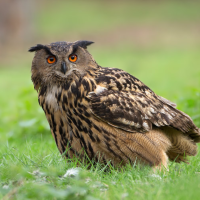Beschreibung
Interesting combination of various habitats (sea, sea cliffs, stony steppe, rocky gorge with a marsh with river vegetation) in addition to specific geographical position (the coasline sharply turns from North-South into East-West orientation), which makes the site very important for migrating birds. Situated in the North-Eastern part of Bulgaria, it supports some species with eastern distribution, such as Nonnensteinschmätzer, and makes the place the closest to Western Europe to see this species. Cliffs provide breeding sites for the Eastern race of the Krähenscharbe - Phalacrocorax aristotelis desmarestii. Intensive migration of birds of many species attracts here Eleonorenfalke, Wanderfalke and other, and the abundance of rodents makes Kaliakra traditional breeding site of the Uhu. In May flocks of Rosenstar pass through the area, and breed there in some years.
Details
Zugang
The site is well marked, and there is a park site near to the very cape, from where you can walk. There are possibilities to park the car in the near valley (Bolata Valley) and to explore it on foot.
Terrain und Habitat
Feuchtgebiet , Ebene , Steppe , Landwirtschaft , Grasland, Wiesen , Plateau , Schlucht/Cliff , Tal , Fluss , Meer , SchilfflächenBedingungen
Flach , Hügelig , Felsig , Offene LandschaftRundweg
JaIst ein Spektiv nützlich?
JaGute Beobachtungszeit
GanzjährigBeste Beobachtungszeit
Frühjahr , Sommer , Herbstzug , FrühjahrszugRoute
asphaltierte StraßeSchwierigkeitsgrad der Tour
EinfachErreichbarkeit
zu Fuß , Fahrrad , AutoBeobachtungshütten oder -türme
NeinZusätzliche Informationen
Entering your records into the free mobile application SmartBirds Pro https://smartbirds.org/ you will help Nature conservation in Bulgaria.



